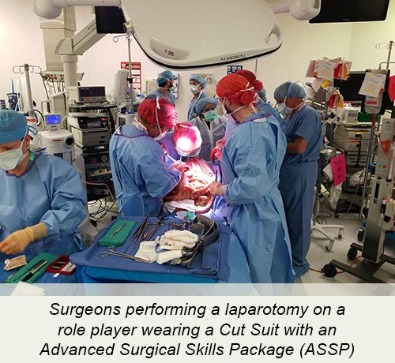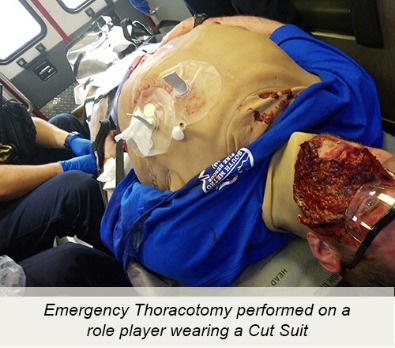The Next Nine MinutesActive threat and mass casualty incidents (MCI) tragically have increased in frequency and complexity throughout the United States. Local law enforcement (LE) and medical emergency response teams have struggled to manage actual events. A significant contributor to this failure is the way in which first responders train for these incidents. Put simply, training is not done in a realistic[1] environment resembling actual scene conditions and performed using critical skills with heightened stress reactions of providers. First responders more likely default to tabletop scenarios and sandbox style trainings based on simplicity of logistics or ease of scheduling with limited number of entities participating rather than full immersive, multi-agency drills that promote best practices. In one of the most ambitious efforts in the U.S. to reverse these deficiencies, the 18th Judicial District of Colorado agreed on a uniform regional standard operational guideline for active threat resolution. Two years of preparation by Denver South Metro Fire Rescue culminated in a month- long Active Threat Response Training called “The Next Nine Minutes,” in November of 2018. It was one of the largest active shooter drills ever performed, with 904 personnel trained in 18 mass casualty active shooter drills. The training was named “The Next Nine Minutes” because the goal was to have the first unit arrive on scene, establish a rescue task force (RTF), and produce the first, most critical, patient for transport in under nine minutes. It also directly correlates to the average length of time in real events that a shooter engages his/her targets prior to shooting ceasing. Three different churches and three hospitals provided support for eighteen training sessions and active shooter scenarios with dozens of role players, many of whom wore human worn surgical simulators (Cut Suits), others were amputees, and all were made up with medical moulage. Rocky Vista University Medical school provided volunteers, doctors and equipment. Ambulances took the injured to hospitals where they were admitted to the emergency department. Surgeons performed complex trauma surgeries on the Cut Suit in the operating rooms with STOPS supplied Advanced Surgical Skills Packages (ASSP). 
SWAT Paramedics were integrated with LE in the “hot zone,” while having a RTF comprised of fire/EMS and LE quickly behind in the “warm zone,” for rescue of known victims reported by interior teams. It is well documented over many MCI events that victims have been dying due to the lack of simple bleeding control measures and rapid access of first responders into the building. This was the lead finding of the Hartford Consensus. Each day of training in November, hours of video and time stamps for tactical benchmarks were tracked and reviewed. Very few times, out of the 18 training sessions, did first responders exceed the benchmark of producing a patient in under nine minutes after their arrival. This was one of the two most significant lessons learned reported in the post training after-action document and through subsequent follow-up training sessions recapping the shortfalls of the drill. The other top lesson learned was failure to immediately start unified command with LE and fire/EMS. 
The Next Nine Minutes - Six Months LaterThe implications of having full immersive multi-agency training with a uniform regional standard operational guideline for active threat resolution were seen at the STEM School shooting in Highlands Ranch, Colorado on May 7th, 2019. The event occurred only a few miles from The Next Nine Minutes training sites. At 13:53 an active shooter was reported. The STEM shooting had multiple alleged shooters which added to the complexity. The police response was immediate, arriving slightly more than two minutes later at the school. Within three minutes an officer engaged the first shooter. In a nearly simultaneous series of events, other officers placed three tourniquets and one chest seal on the victims. Two of these tourniquets were placed on one patient with bilateral thigh GSW injuries. There were nine injured victims in total. These events happened before the first South Metro Fire Rescue unit even arrived on the scene. It was 24 minutes from the initial 911 call until the last injured patient was transported from the scene. The 911 call to the first Fire/EMS RTF entering the building was 11 minutes with a transport time from Fire/EMS arrival of 4 min and 32 seconds for the first two critical patients. Four South Metro Fire Rescue paramedic transport medics transported all patients within 13 minutes of Fire/EMS arrival. The only patient that died in the STEM School shooting, according to the coroner’s report, died due to a through-and-through indeterminate-range gunshot wound to the chest. 78% of the fire/EMS that were a part of the STEM School shooting response had taken part in The Next Nine Minutes training. Multiple responders from these agencies commented that the similarities between the training and real-life shooting aided in the success of their response. However, one of the limitations is that there were not any after-action surveys or interviews given to fully assess the impact that the training had on the responders in fire/EMS, LE, or within the receiving hospitals. The STEM shooting was a tragic and unexpected event that is still an on-going criminal investigation. It did not seem appropriate at the time to subject the responders to a survey. In the future, it would be beneficial to assess the usefulness of this type of training with further surveys and metrics in an attempt identify areas of improvement for upcoming courses. War in both Iraq and Afghanistan has completely changed many emergency survival tactics. Among the most important research indicates that tourniquet use before shock was present is strongly associated with 90% survival. When evaluating the time that it takes for first responders to get to a patient, specifically with bleeding control as the first critical factor, it is easy to understand why critical patients are dying prior to first responder arrival. The more that the time to patient access is reduced, the greater the ability to maximize the survivability of patients due to implementation of life saving interventions. Although active threat incidents are some of the most dynamic and complex of any scene that responders manage, simple bleeding control must be the first critical factor and must be a shared objective of LE and EMS. It is indisputable that LE will be the first 911 response into the building or scene and will play a major role in the survival of patients. Newly arriving untasked officers need to be allocated to apply tourniquets, pack junctional injuries, apply chest seals, and report victim locations—this is the second critical factor for the LE response. Therefore, it is imperative that LE are as well trained in these tasks as the EMTs and paramedics in your local jurisdiction. This is why in The Next Nine Minutes, LE underwent static and kinetic training alongside fire/EMS in these tasks and were not allowed to proceed until they showed mastery. This life saving intervention training and division of tasks within LE were critical for the success during the STEM School shooting response. It is mandatory that we train our LE officers in these life-saving interventions. More details can be seen in a peer-reviewed paper accepted by the American Journal of Disaster Medicine titled “The next nine minutes: Lessons learned from the large-scale active shooter training prior to the STEM school shooting” by Alissa Lenz, BS; Ryan Shelton, MPS, NREMT-P; Rebecca Ryznar, PhD; Kit Lavell BA; David Ross, DO, FACEP; Susan Carter, MD, FACOG, FACS; Andrew Kirkpatrick, CD, MD, MHSc, FRCSC, FACS; Jessica L. McKee, BA, MSc; Anthony J. LaPorta, MD, FACS; Chris Wells, BS [1]Strategic Operations (STOPS) calls this type of training Hyper-Realistic® and defines it as “the achievement of such a high degree of fidelity in the simulation of real world conditions in a training environment that participants willing suspend disbelief so as to emotionally become totally immersed and eventually stress inoculated in a way that can be measured physiologically.” Recent medical studies corroborate anecdotal evidence that Hyper-Realistic® immersion training produces a stress inoculation effect and that repetitive training in controlled, stressful situations enables people to lower their stress levels from the detrimental range to a more beneficial one, in a measurable way. |